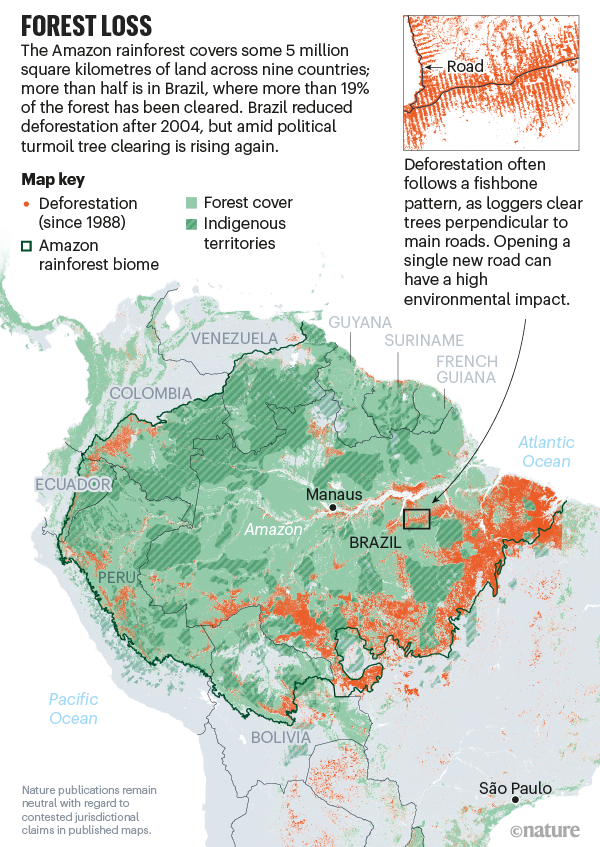Climate change, deforestation and fires could cause the world’s largest rainforest to hit a tipping point that could turn much of it into dry scrubland. There would be an impact on biodiversity, livelihoods, carbon emissions and weather patterns. Scientists are desperately exploring just how big the effects might be, when the tipping point could occur — and what must be done to stop it.

Part of the problem is that a lack of data makes it hard to predict how climate change, deforestation and fires intersect, and how the forest will react. One big uncertainty is how a warmer climate enriched with CO2 would affect the Amazon. Extra CO2 could help the forest to flourish — but low levels of the nutrient phosphorus in the region’s soil might limit plant growth, says Anja Rammig, an ecologist at the Technical University of Munich, Germany.
READ MORE

